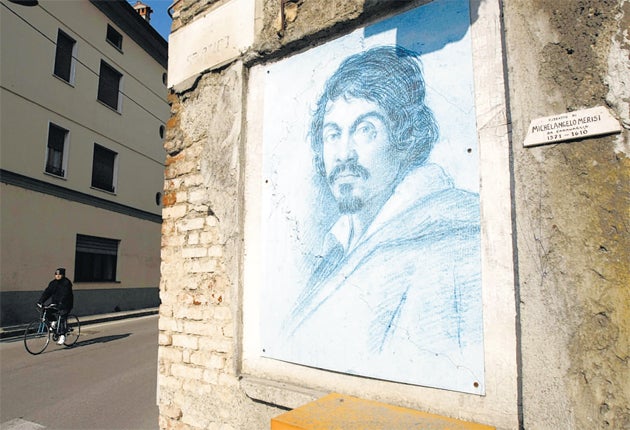After 400 years, secret of Caravaggio's death may be solved at last

Your support helps us to tell the story
From reproductive rights to climate change to Big Tech, The Independent is on the ground when the story is developing. Whether it's investigating the financials of Elon Musk's pro-Trump PAC or producing our latest documentary, 'The A Word', which shines a light on the American women fighting for reproductive rights, we know how important it is to parse out the facts from the messaging.
At such a critical moment in US history, we need reporters on the ground. Your donation allows us to keep sending journalists to speak to both sides of the story.
The Independent is trusted by Americans across the entire political spectrum. And unlike many other quality news outlets, we choose not to lock Americans out of our reporting and analysis with paywalls. We believe quality journalism should be available to everyone, paid for by those who can afford it.
Your support makes all the difference.Italian researchers believe they have found the remains of Caravaggio, but 400 years later some of the mysteries surrounding the death of the master artist may never be solved.
After a year of digging and analysing centuries-old bones, the researchers said yesterday they have identified a set of bones they believe to be Caravaggio's, though they admit they can never be 100 per cent certain.
They think Caravaggio may have died from sunstroke while weakened by syphilis and other ailments.
The set of bones – a fragment of the frontal part of the skull, two jaw pieces, a femur and a fragment of the sacrum, the bone at the base of the spine – were displayed in Ravenna, where most of the analyses have been carried out. Kept inside a rectangular case, the bones rested on a silk red cushion.
Caravaggio died in Porto Ercole, a town on the Tuscan coast, in 1610. At 39, he had been a celebrity painter and led a dissolute life of street brawls, boozing and encounters with prostitutes. His last days are shrouded in mystery.
The team of scientists and historians dug up and studied bones found in Porto Ercole's crypts, and combed through archives in search of papers documenting Caravaggio's movements. The group conducted carbon dating, DNA tests and other analyses on the bones, until they singled out one set of fragments – "Find No. 5".
"There can't be the scientific certainty because when one works on ancient DNA, it is degraded," Giorgio Gruppioni, an anthropologist on the team, said.
"But only in one set of bones did we find all the elements necessary for it to be Caravaggio's – age, period in which he died, gender, height."
The group says there is an 85 per cent probability they are right, though team leader Silvano Vinceti said: "We are being cautious. As a historian, I can say we have found the remains."
The DNA comparison was conducted between the bones that had been identified and that of some possible male relatives in Caravaggio, a small town in northern Italy where the painter – whose real name was Michelangelo Merisi – was born in 1571. Caravaggio had no known children, therefore no direct descendants.
Mr Gruppioni said they identified a genetic combination in those whose last name was Merisi or Merisio, compatible with traces found on the bones in question. Because the bones are old and the DNA degraded, not all genetic characteristics could be confirmed.
The cause of Caravaggio's death has been the subject of much conjecture. Possibilities raised by scholars range from malaria to syphilis to murder at the hands of one of the many enemies Caravaggio made over the years. The researchers believe that Caravaggio may have died from sunstroke, saying that 1610 was recorded as an extremely hot year. The project wrapped up as Italy marks the 400th anniversary of Caravaggio's death, remembering him as a revolutionary artist who changed the history of modern painting.
Join our commenting forum
Join thought-provoking conversations, follow other Independent readers and see their replies
Comments